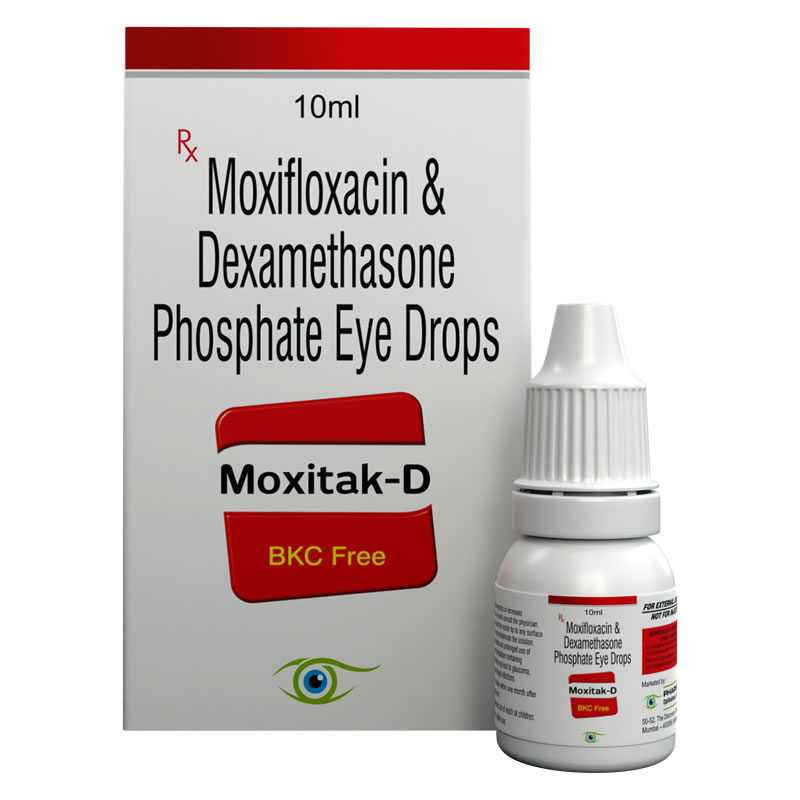Moxitak D (Eye Drops)
“ANTI-BACTERIAL OF YOUR CHOICE WITH TIME TESTED CORTICO STEROID DEXAMETHASONE”
COMPOSITION-
Moxifloxacin hydrochloride eq. to moxifloxacin 0.5% w/v, Dexamethosone Sodium Phosphate eq. to Dexamethosone Phosphate 0.1%w/v, Sterile aqueous vehicle q.s.
Mode of Action:
MOXIFLOXACIN, in Moxitak D works as an anti-bacterial agent Floro-Quinolones exert their antibacterial effect by preventing bacterial DNA from unwinding and duplicating. Moxifloxacin hydrochloride is a synthetic 8-methoxyfluoroquinolone with a broad spectrum anti-bacterial effect on gram positive, gram negative and other anaerobic micro-organism. Well tolerated with minimal ocular side effects and provides increased penetration into ocular tissues and fluids with improved activity against Streptococci and Staphylococci species. It has a moderate to excellent activity against clinically relevant, gram-negative ocular pathogens.
DEXAMETHASONE is a synthetic analog of naturally occurring glucocorticoids (hydrocortisone and cortisone). Dexamethasone sodium phosphate is a water soluble, inorganic ester of dexamethasone and has anti-inflammatory and immunosuppressant effects. It fulfills it function through multiple pathways, it binds with the corticosteroid receptors and alters the protein synthesis thus prevents the leukocyte infiltration at the site of inflammation, interferes in the function of the mediators responsible for the inflammatory response, suppresses the humoral immune responses and reduction in edema or scar tissue. The anti-inflammatory actions of dexamethasone involve phospholipase A2 inhibitory proteins which control the biosynthesis of potent mediators of inflammation such as prostaglandins.
Bacterial Conjunctivitis (pink eye) and Bacterial Corneal Ulcer Infection caused by susceptible strains of Staphylococcus species. Bacterial ocular infection associated with bacterial Blepharitis.
One drop in the affected eye(s), within intervals directed by your doctor.
- Growth of Resistant Organisms with Prolonged Use
- Avoidance of Contact Lens Wear
- if irritations persist, discontinue the use and consult the eye doctor
- Prolonged use may result in glaucoma
- Defects in visual acuity and fields of vision
Adverse Effect:
- Nausea, Diarrhea, Dizziness, blurred vision that does not go away, burning, stinging, or itching of the eyes or eyelids.
- Ocular hyperemia, Ocular pain and Ocular pruritus





